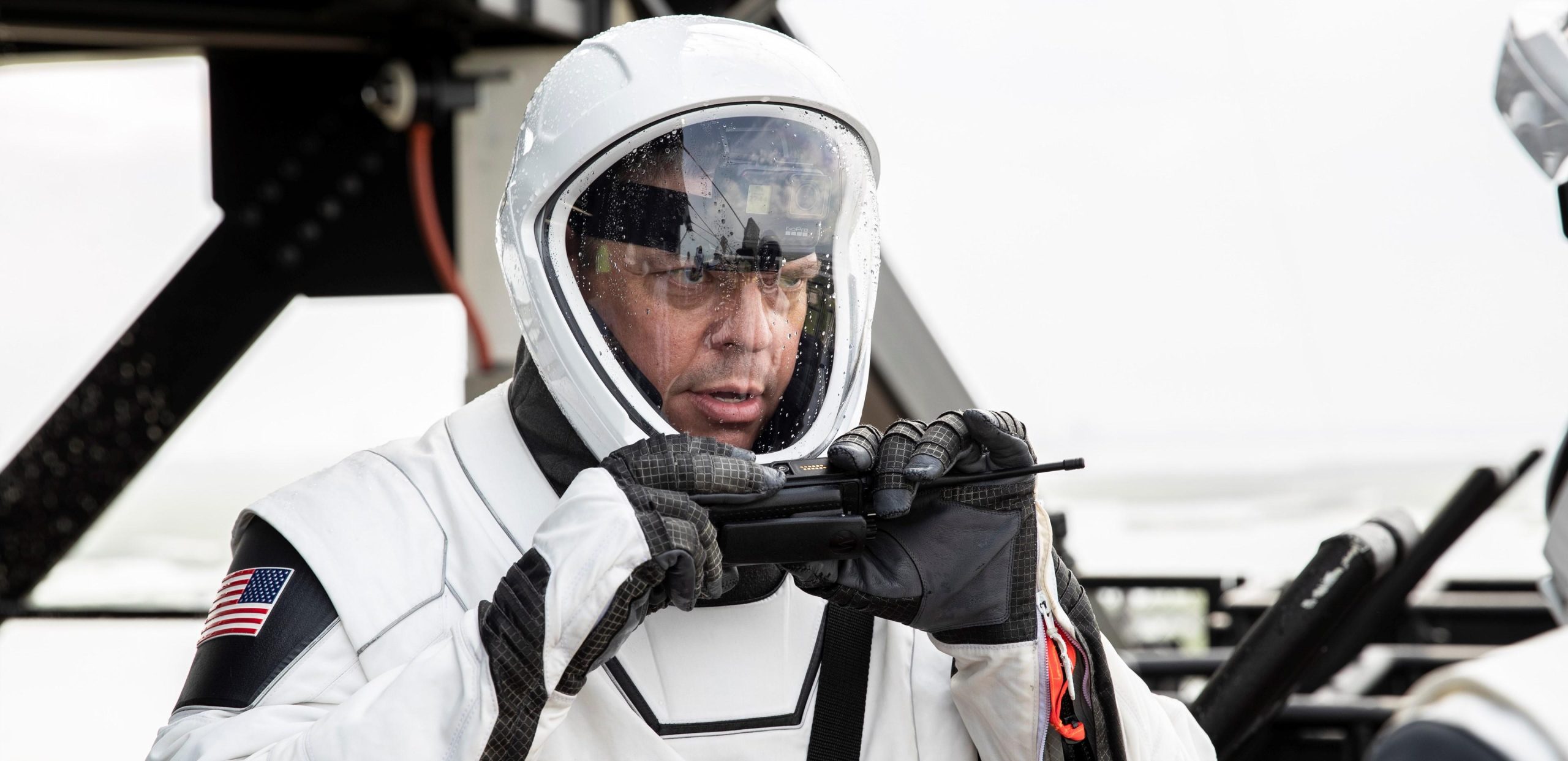
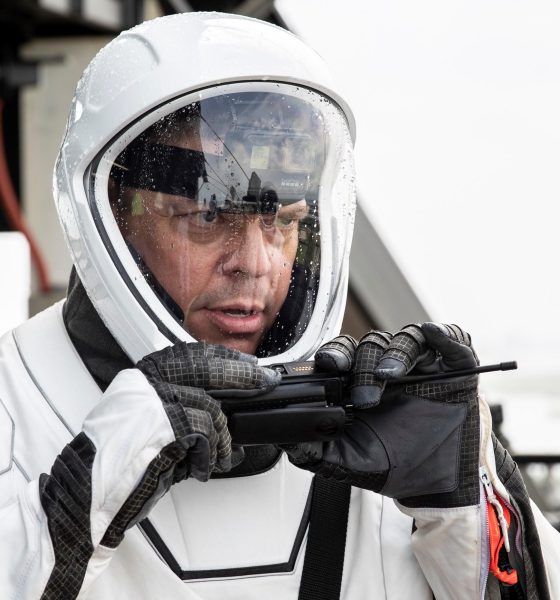
News
SpaceX, NASA test escape zipline ahead of Crew Dragon’s astronaut launch debut
As part of continued preparations ahead of SpaceX’s Demonstration-2 mission (DM-2) that will debut Crew Dragon’s ability to support astronaut flight, SpaceX and NASA have successfully tested crew emergency egress (escape) systems at SpaceX’s primary crew launch facilities located at Launch Complex 39-A (LC-39A) at Kennedy Space Center in Florida. The successful verification tests have proven that SpaceX is ready to support crewed launches and preserve human life with effective escape methods, including a zipline mounted basket system that will whisk astronauts away from Crew Dragon and Falcon 9 in the event of a launch pad anomaly.
The formal launch pad escape verification test comes just a month after SpaceX and NASA CCP teams practiced astronaut recovery rehearsals – including emergency astronaut evacuation – from a high-fidelity Crew Dragon mockup capsule aboard the recovery Vessel GO Searcher.
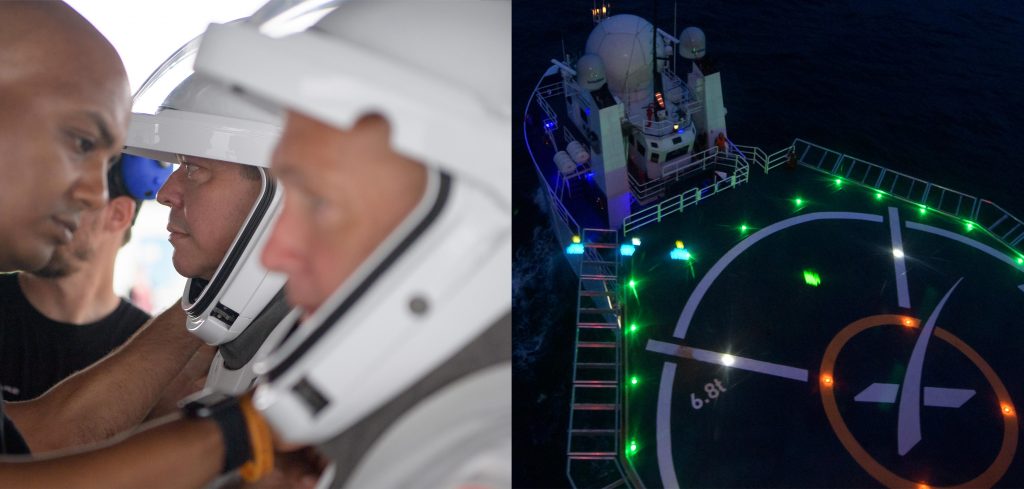
Multiple teams from NASA and SpaceX including personnel from the Astronaut Office at NASA’s Johnson Space Center in Houston, NASA Flight Surgeons, SpaceX systems engineers, Kennedy Aero Medical, and Commercial Crew Program Safety worked together to successfully complete two full-dress rehearsals of different escape methods.
In a Commercial Crew Program (CCP) blog post, NASA CCP launch operations integrator Steve Payne stated that “this demonstration allowed all the various teams responsible for ground operations, system design, ground safety and emergency management to observe and verify the system is ready for operational use.”
The launch pad escape methods practiced at LC-39A simulated evacuation plans that would usher flight and pad crew members to safety should any sort of life-threatening anomaly occur during launch proceedings. Two different versions of escape methods were practiced – a quick emergency evacuation utilizing the zipline system and a less life-threatening situation using an elevator.
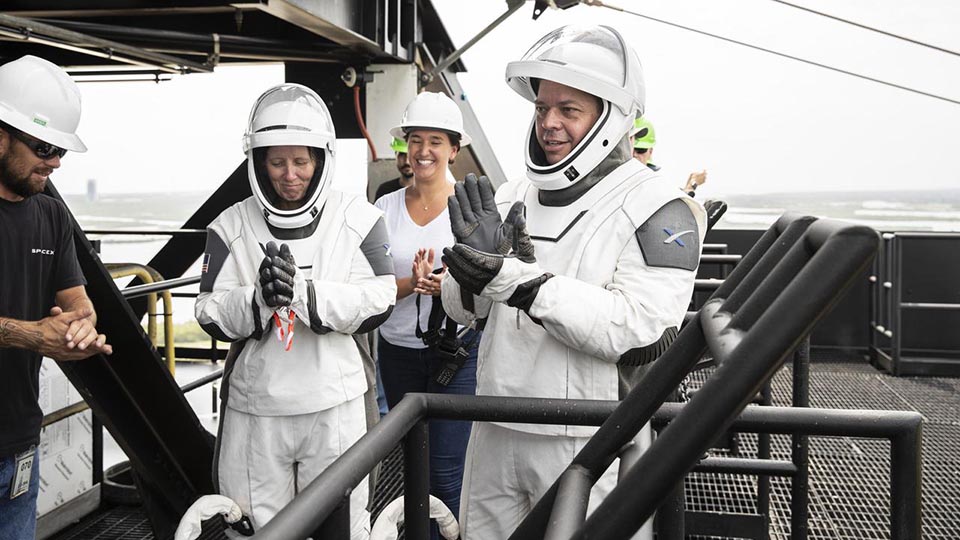
Both escape plans require that crew members are able to evacuate the crew access arm and crew-loading level of the Fixed Service Structure (FSS) at LC-39A, located some 265ft in the air. During SpaceX renovations of LC-39A the crew loading platform was moved roughly half a level higher to accommodate the Crew Dragon capsule’s position atop a Falcon 9 booster, as the Crew Dragon stack is far different from and significantly taller than the Space Shuttles that previously flew from LC 39-A.
One exit method demonstrated how both flight and pad crew members could exit the launch pad under non-emergency circumstances. NASA astronauts Bob Behnken and Shannon Walker participated in the exercises and began the first rehearsal at the end of the crew access arm (CAA) – known as a white room – and took an elevator in the FSS to the ground before being escorted to a safe location nearby.
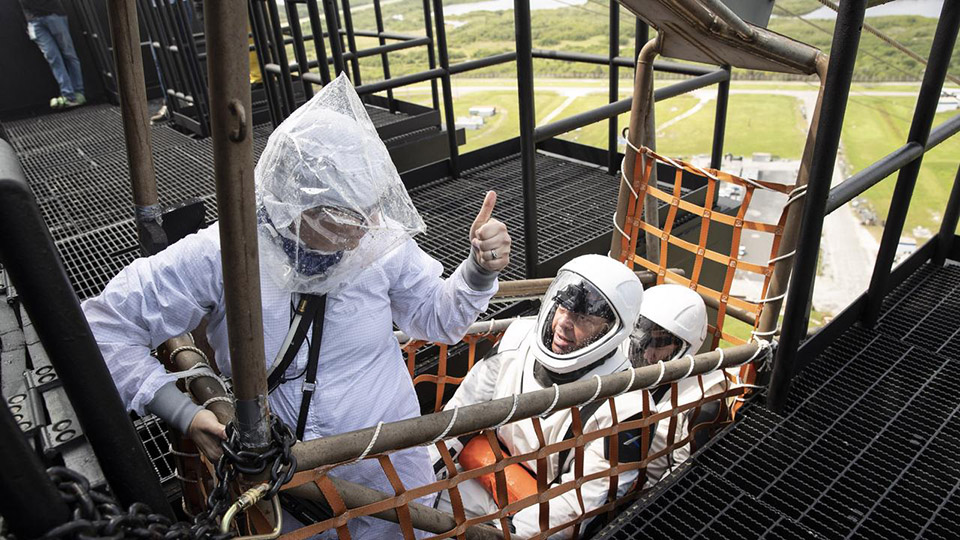
The second rehearsal simulated an emergency (i.e. time-sensitive) egress with active escape alarms and fire suppression systems that required the astronauts and pad crew to escape the launch tower using slide-wire mounted – essentially a serious zipline – basket transport system. This method has been around for decades and during the SpaceX LC-39A renovations some much-needed upgrades were implemented, including a new braking system to control basket descent speed and modifications to allow easier exit from the baskets.
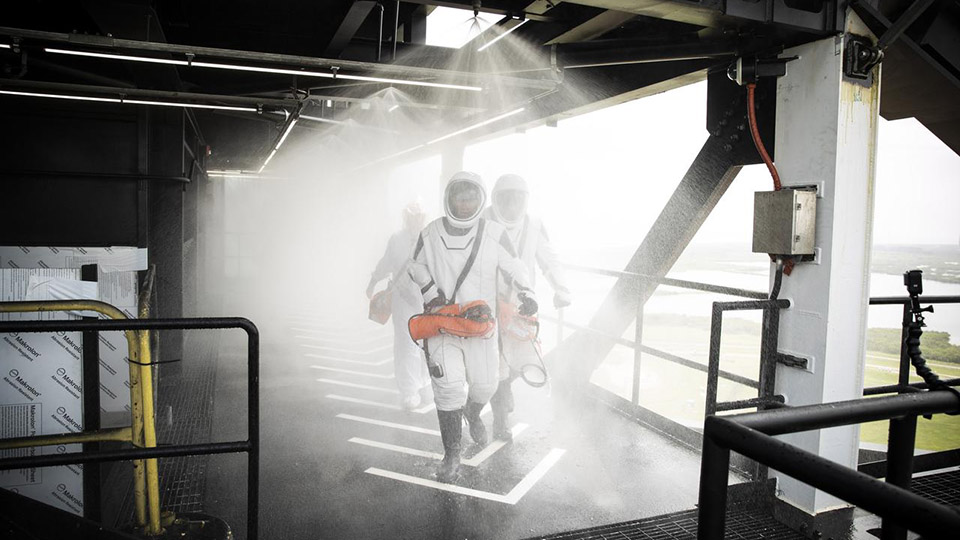
In the blog post, Behnken expressed excitement about the completion of the verification tests, as they bring him and his colleagues one step closer to launching to orbit aboard SpaceX’s Crew Dragon spacecraft. “It’s exciting to have this verification test behind us on our way to the SpaceX Demo-2 mission. Each time today when we headed down the crew access arm, I couldn’t help but think about what it will be like to strap into Dragon on launch day.”
Behnken’s words reflect the anticipation and excitement that is shared by all as we await the historic and triumphant return of human spaceflight from US soil when SpaceX’s Crew Dragon capsule carries astronauts to the International Space Station for the first time. SpaceX CEO, Elon Musk, recently stated that the Crew Dragon capsule (C204) and trunk that will support DM-2 and (hopefully) push SpaceX into a new era of human spaceflight is set to arrive in Florida as early as November 2019. The Falcon 9 booster (B1058) has already completed static fire testing in Texas and is likely already in Florida or set to arrive imminently.
If all goes as planned during Crew Dragon’s upcoming in-flight abort (IFA) test and NASA is able to efficiently complete its myriad of reviews and paperwork, SpaceX should be ready to launch its first astronauts into orbit early next year.
Check out Teslarati’s newsletters for prompt updates, on-the-ground perspectives, and unique glimpses of SpaceX’s rocket launch and recovery processes.

News
Tesla aims to combat common Full Self-Driving problem with new patent
Tesla writes in the patent that its autonomous and semi-autonomous vehicles are heavily reliant on camera systems to navigate and interact with their environment.
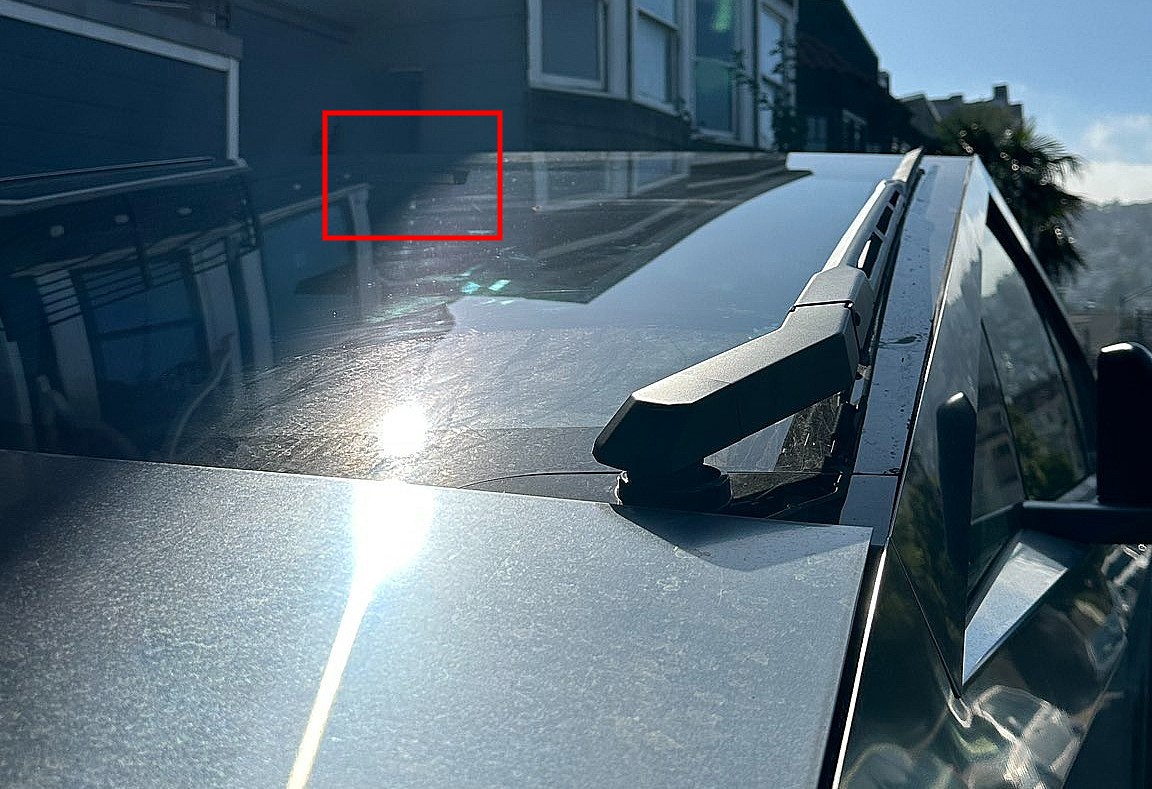
Tesla is aiming to combat a common Full Self-Driving problem with a new patent.
One issue with Tesla’s vision-based approach is that sunlight glare can become a troublesome element of everyday travel. Full Self-Driving is certainly an amazing technology, but there are still things Tesla is aiming to figure out with its development.
Unfortunately, it is extremely difficult to get around this issue, and even humans need ways to combat it when they’re driving, as we commonly use sunglasses or sun visors to give us better visibility.
Cameras obviously do not have these ways to fight sunglare, but a new patent Tesla recently had published aims to fight this through a “glare shield.”
Tesla writes in the patent that its autonomous and semi-autonomous vehicles are heavily reliant on camera systems to navigate and interact with their environment.

The ability to see surroundings is crucial for accurate performance, and glare is one element of interference that has yet to be confronted.
Tesla described the patent, which will utilize “a textured surface composed of an array of micro-cones, or cone-shaped formations, which serve to scatter incident light in various directions, thereby reducing glare and improving camera vision.”

The patent was first spotted by Not a Tesla App.
The design of the micro-cones is the first element of the puzzle to fight the excess glare. The patent says they are “optimized in size, angle, and orientation to minimize Total Hemispherical Reflectance (THR) and reflection penalty, enhancing the camera’s ability to accurately interpret visual data.”
Additionally, there is an electromechanical system for dynamic orientation adjustment, which will allow the micro-cones to move based on the angle of external light sources.
This is not the only thing Tesla is mulling to resolve issues with sunlight glare, as it has also worked on two other ways to combat the problem. One thing the company has discussed is a direct photon count.
CEO Elon Musk said during the Q2 Earnings Call:
“We use an approach which is direct photon count. When you see a processed image, so the image that goes from the sort of photon counter — the silicon photon counter — that then goes through a digital signal processor or image signal processor, that’s normally what happens. And then the image that you see looks all washed out, because if you point the camera at the sun, the post-processing of the photon counting washes things out.”
Future Hardware iterations, like Hardware 5 and Hardware 6, could also integrate better solutions for the sunglare issue, such as neutral density filters or heated lenses, aiming to solve glare more effectively.
Elon Musk
Delaware Supreme Court reinstates Elon Musk’s 2018 Tesla CEO pay package
The unanimous decision criticized the prior total rescission as “improper and inequitable,” arguing that it left Musk uncompensated for six years of transformative leadership at Tesla.

The Delaware Supreme Court has overturned a lower court ruling, reinstating Elon Musk’s 2018 compensation package originally valued at $56 billion but now worth approximately $139 billion due to Tesla’s soaring stock price.
The unanimous decision criticized the prior total rescission as “improper and inequitable,” arguing that it left Musk uncompensated for six years of transformative leadership at Tesla. Musk quickly celebrated the outcome on X, stating that he felt “vindicated.” He also shared his gratitude to TSLA shareholders.
Delaware Supreme Court makes a decision
In a 49-page ruling Friday, the Delaware Supreme Court reversed Chancellor Kathaleen McCormick’s 2024 decision that voided the 2018 package over alleged board conflicts and inadequate shareholder disclosures. The high court acknowledged varying views on liability but agreed rescission was excessive, stating it “leaves Musk uncompensated for his time and efforts over a period of six years.”
The 2018 plan granted Musk options on about 304 million shares upon hitting aggressive milestones, all of which were achieved ahead of time. Shareholders overwhelmingly approved it initially in 2018 and ratified it once again in 2024 after the Delaware lower court struck it down. The case against Musk’s 2018 pay package was filed by plaintiff Richard Tornetta, who held just nine shares when the compensation plan was approved.
A hard-fought victory
As noted in a Reuters report, Tesla’s win avoids a potential $26 billion earnings hit from replacing the award at current prices. Tesla, now Texas-incorporated, had hedged with interim plans, including a November 2025 shareholder-approved package potentially worth $878 billion tied to Robotaxi and Optimus goals and other extremely aggressive operational milestones.
The saga surrounding Elon Musk’s 2018 pay package ultimately damaged Delaware’s corporate appeal, prompting a number of high-profile firms, such as Dropbox, Roblox, Trade Desk, and Coinbase, to follow Tesla’s exodus out of the state. What added more fuel to the issue was the fact that Tornetta’s legal team, following the lower court’s 2024 decision, demanded a fee request of more than $5.1 billion worth of TSLA stock, which was equal to an hourly rate of over $200,000.
Delaware Supreme Court Elon Musk 2018 Pay Package by Simon Alvarez
News
Tesla Cybercab tests are going on overdrive with production-ready units
Tesla is ramping its real-world tests of the Cybercab, with multiple sightings of the vehicle being reported across social media this week.

Tesla is ramping its real-world tests of the Cybercab, with multiple sightings of the autonomous two-seater being reported across social media this week. Based on videos of the vehicle that have been shared online, it appears that Cybercab tests are underway across multiple states.
Recent Cybercab sightings
Reports of Cybercab tests have ramped this week, with a vehicle that looked like a production-ready prototype being spotted at Apple’s Visitor Center in California. The vehicle in this sighting was interesting as it was equipped with a steering wheel. The vehicle also featured some changes to the design of its brake lights.
The Cybercab was also filmed testing at the Fremont factory’s test track, which also seemed to involve a vehicle that looked production-ready. This also seemed to be the case for a Cybercab that was spotted in Austin, Texas, which happened to be undergoing real-world tests. Overall, these sightings suggest that Cybercab testing is fully underway, and the vehicle is really moving towards production.
Production design all but finalized?
Recently, a near-production-ready Cybercab was showcased at Tesla’s Santana Row showroom in San Jose. The vehicle was equipped with frameless windows, dual windshield wipers, powered butterfly door struts, an extended front splitter, an updated lightbar, new wheel covers, and a license plate bracket. Interior updates include redesigned dash/door panels, refined seats with center cupholders, updated carpet, and what appeared to be improved legroom.
There seems to be a pretty good chance that the Cybercab’s design has been all but finalized, at least considering Elon Musk’s comments at the 2025 Annual Shareholder Meeting. During the event, Musk confirmed that the vehicle will enter production around April 2026, and its production targets will be quite ambitious.








